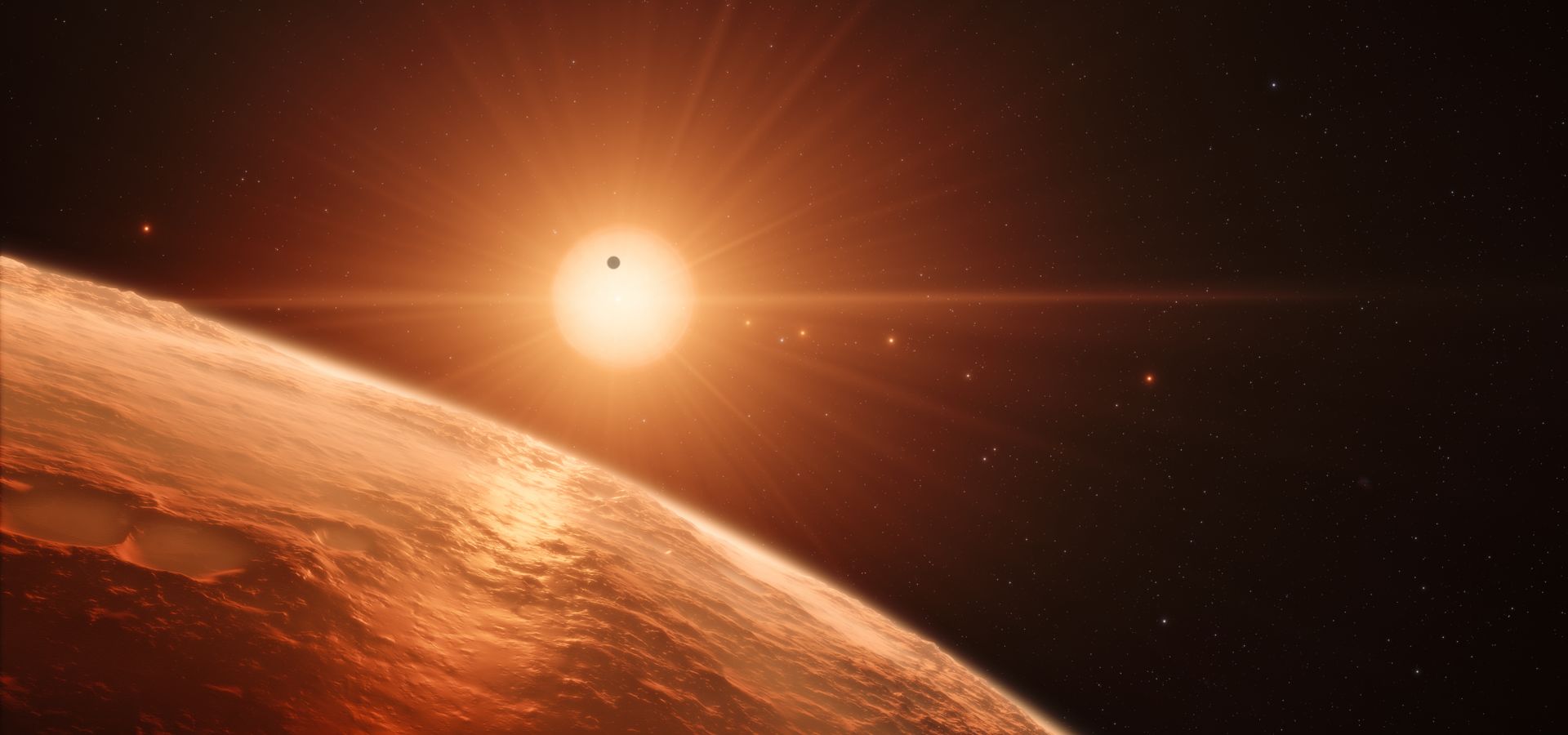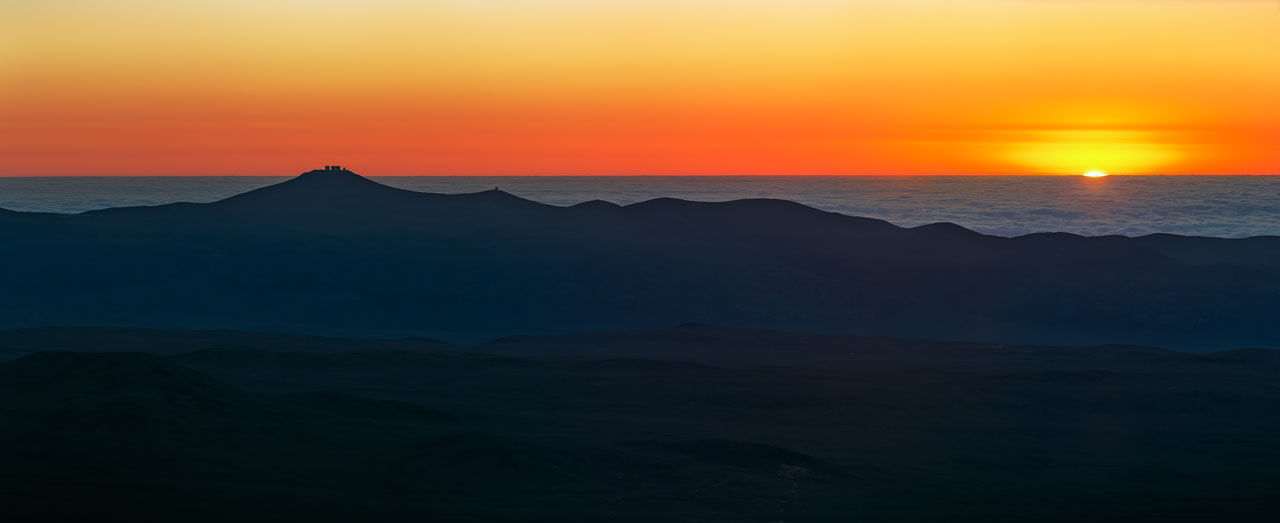
Hunting for Other Worlds
ESO Fellow Matias Jones tells us about ESO’s search for exoplanets
- The instruments ESO uses to search for exoplanets
- What major discoveries we’ve made so far
- How the ELT and future instruments will help us find other worlds
Q: Matias, how did you get involved in ESO’s hunt for exoplanets?
A: I first became interested in the field of exoplanets during my PhD at the Universidad de Chile in Santiago, Chile. This was back in 2008 when I started to search for planets around giant stars. These kinds of stars are near the end of their lives, so they expand to have large radii and cool into red giants. This stellar expansion phase may greatly affect the architecture of planetary systems. The orbital angular momentum transferred from the planet to the star, created by the mutual attraction between the planet and the stellar surface, causes the planet to slow down and move into an inner orbit until it is evaporated by the heat from the stellar surface. By looking for close-in planets (or lack of them) orbiting such evolved stars, we can measure how efficiently planets are destroyed by this mechanism.
During my PhD, I was able to spend two years in the ESO studentship programme in Vitacura. Afterwards, I got a postdoctoral position at the Astro Engineering Center of La Pontificia Universidad Católica de Chile, also in Santiago, where I worked mainly on extrasolar planet searches. I also helped to develop a high-resolution spectrograph, called FIDEOS (FIber Dual Echelle Optical Spectrograph), optimised to search for exoplanets using the radial velocity method. This spectrograph is currently installed at ESO’s La Silla Observatory. At the end of 2016, I started a fellowship at ESO in Vitacura and Paranal.

Q: How are exoplanets detected? Can we look for them in images or do we have to observe the parent star?
A: Many methods have been developed to detect extrasolar planets, but there are three main methods:
Firstly, the radial velocity method: As a planet orbits a star, they exert a gravitational force on each other. The star’s force is huge and the planet’s force is tiny, but it is enough to make the star wobble slightly. We can look for either a blueshift (as the star moves towards us) or a redshift (as the star moves away) in the star’s light, and thus infer its radial velocity. From these measurements, we can figure out may different things about the planet, such as its orbital period, minimum mass, and so on. With current ESO instruments, we can measure the velocity of the star with a precision of less than a metre per second.
Secondly, the transit method: If the planetary orbit is aligned with the line of sight of the observer, then the planet blocks a portion of the stellar light when the planet passes in front of the parent star. If we periodically measure this tiny decrease in light, we can infer that this effect is caused by an unseen companion as it orbits and then infer information such as the planet’s radius. This is, like the previous method, an indirect detection.
This method is particularly interesting for studying planetary atmospheres. As the light from the star passes through the atmosphere on its way to Earth, the atmosphere absorbs some of this light. Different elements absorb light with different wavelengths (colours) and so by studying this light you can see which molecules are in the atmosphere of the planet. Then you can start searching for specific molecules, especially the ones that are biomarkers, that could be evidence of life.
Thirdly, direct imaging: This is the only technique that directly takes an image of exoplanets. To look for planetary companions, we use adaptive optics, to compensate for the atmospheric turbulence, and a coronagraph that blocks the light from the star. However, this method is mainly restricted to relatively massive, young sub-stellar companions because these planets are more luminous than lighter and older planets, making their detection possible.
Q: How does ESO search for exoplanets?
A: Several ESO instruments are optimised for hunting exoplanets. Perhaps the most prolific one is HARPS (the High Accuracy Radial velocity Planet Searcher), which is a high-resolution spectrograph attached to the ESO 3.6-metre telescope on La Silla. HARPS leads the field of ground-based exoplanet hunting, and it’s one of the most successful planet finders in the history of astronomy. It uses the radial velocity method, picking up the slight wobbles of a star with amazing precision.
Another high-resolution spectrograph, ESPRESSO (Echelle SPectrograph for Rocky Exoplanet and Stable Spectroscopic Observations), has just come online at the Very Large Telescope (VLT). It’s basically the successor to HARPS but on a much bigger telescope, so it will take the search for exoplanets to the next level.
We also have instruments that can directly image exoplanets, such as the adaptive-optics instruments NACO and SPHERE, both on different Unit Telescopes (UTs) at Paranal. NACO took the first-ever direct image of an exoplanet back in 2004. SPHERE focuses on finding new giant exoplanets orbiting nearby stars, and can also look at discs of dust and debris around other stars, where planets may be forming.
Q: What are some of the biggest exoplanet breakthroughs and discoveries made by ESO so far?
A: There are many interesting discoveries made with ESO instruments. For instance, using HARPS astronomers have detected hundreds of planetary systems, including the famous TRAPPIST-1 system just 40 light-years from Earth. This system has both the largest number of Earth-sized planets yet found and the largest number of worlds that could support liquid water on their surfaces.
HARPS also discovered a rocky planet, Proxima Centauri b, orbiting the closest star to our Sun. Intriguingly it has a temperature suitable for liquid water to exist on its surface.
Additionally, instruments like NACO and SPHERE have allowed us to detect a few massive substellar companions, like gas giants several times more massive than Jupiter, using the direct imaging technique, plus many protoplanetary discs, where we think most planets form.
Q: Will the upcoming ELT change what ESO can learn about alien worlds?
A: The Extremely Large Telescope will be equipped with incredibly advanced instruments that will allow us to detect exoplanets in a more efficient way. The ELT may hopefully discover more exoplanets like radial velocity and direct imaging, and, with the latter technique, may even be able to study these planetary atmospheres. For these techniques, the size of the telescope really matters, so the ELT will play a huge role. It will be revolutionary. The ELT will also allow us to study planetary systems as they’re still forming, helping us answer fundamental questions about how planets form and evolve.
But we don’t have to wait for the ELT to improve our knowledge of exoplanets. There are also always new instruments coming to telescopes at La Silla and Paranal, and continuous upgrades of the current facilities improve the science output of the current instruments. In particular, near-infrared spectrographs will allow us to detect and study exoplanets in more detail — for instance, to study their atmosphere.
Q: What excites you most about exoplanet science, both now and in the future?
A: I'm interested in several aspects of exoplanets, but particularly in their long-term stability of exoplanets and the period of time when a parent star engulfs a planet as it evolves into a red giant. By studying other planetary systems, we can gain some information about our own Solar System when the Sun becomes a giant star about five billion years from now. For instance, we now know that short-period planets around giant stars are rare compared to solar-type stars. This might be at least in part due to the tidal destruction of the innermost planets by stars expanding as they age. By combining transit data from the Kepler mission with radial velocity measurements, we have already been able to detect a few such close-in planets, which we expect will be engulfed “soon” by their parent stars.
Q: You work up on the mountain at Paranal — what’s it like to spend so much time in such an amazing environment?
A: ESO Fellows in Santiago basically spend half of their time at the ESO offices in Vitacura doing research, and half of the time doing functional work for the observatory, mainly as a support astronomer. I spend about 80 days per year up on the mountain, providing support for visiting astronomers and operating the instruments that I am assigned (SPHERE and VISIR mounted on UT3). When no visiting astronomer is present at the telescope to collect their own data, we perform the observations in “service mode.” In this mode, we decide which observations are done during the night in collaboration with the telescope operators.
I really enjoy my time on Paranal for two main reasons. First of all, the environment is fantastic — it is really a unique place. Paranal is located in the middle of the driest desert in the world and at an altitude of 2635 metres. The view at sunset and sunrise is simply amazing. All of the mountains reflect the sunlight and become very nice reddish colours. At night, especially when there is no Moon, the view of the Milky Way is astonishing.
From a more scientific perspective, the VLT at Paranal is the most advanced optical observatory in the world — not only because of the large aperture telescopes, each 8.2 metres in diameter, but also because of the instruments that are attached to them. These instruments deliver very high-quality data, allowing us to do front-line research in astronomy. For me, it is a unique opportunity to work in such a great environment.
Numbers in this article
| 7 |
The number of planets ESO discovered in the famous TRAPPIST-1 system. |
| 2635 | The altitude in metres of the Paranal Observatory. |
| 80 | The number of days ESO Fellows in Chile spend observing. |
| 1992 | The year the first extrasolar planet was discovered. |
Biography Matias Jones
Matias Jones is an ESO Fellow in Chile. After studying physics and astronomy in his undergraduate degree, he earned a Masters in Astronomy at the Universidad de Chile in Santiago, with a thesis focusing on studying Type II supernovae as extragalactic distance indicators. While working towards his PhD, which he obtained in 2013, he spent more than two years at ESO. He then did a postdoc at La Pontificia Universidad Católica de Chile at the Astro Engineering Centre, where he worked on the design and construction of a high-resolution spectrograph called FIDEOS (FIber Dual Echelle Optical Spectrograph), which is optimised for planet searches via the radial velocity method, before returning to ESO.







